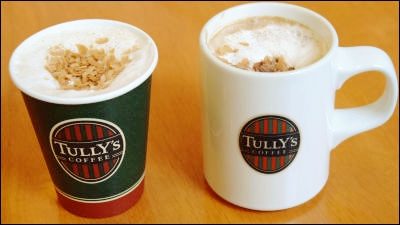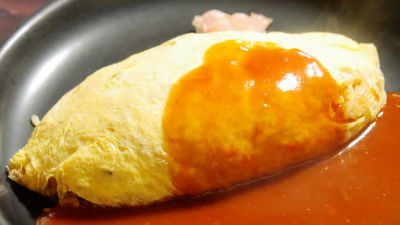I went to a hands-on laboratory that made Kyoto Confection "Raw Hachidobashi" from the fabric and handmade the raw Yatsuhashi bamboo

It is said that "Yaitabashi" familiar as Kyoto souvenir is derived from "hard roasted cracker" which brought out rice grains remaining in rice gruel juice and baked with honey and Nikki added to the stone mill. In recent years there is a "live eight bridge" that wrapped anchovies while leaving a rich texture without baking the dough, but the experience that you can hand-make the live eight bridges using the three kinds of beans from the dough "The eighth bridge buildingAs it is said that it is being done at the factory, I actually tried making the live eight bridges.
The eighth bridge building
http://yatuhasian.jp/
Experiences of Karucha 【Handmade experience of raw bamboo making from cloth】: Hachidobashian Kakehashi
http://yatuhasian.jp/exp/detail.php?id=2
The address of the Hachidobashian Kakehashi is "Kyoto City Ukyo-ku Nishikyo Cole Calto-cho 8" and it is about 15 minutes on foot from the Hankyu Kyoto Line Nishikigori Station. From 9 o'clock to 16 o'clockPrivate busYou can have me pick you up at the station.
The appearance of the shop is like this, it is a Japanese-style building with 3 floors.
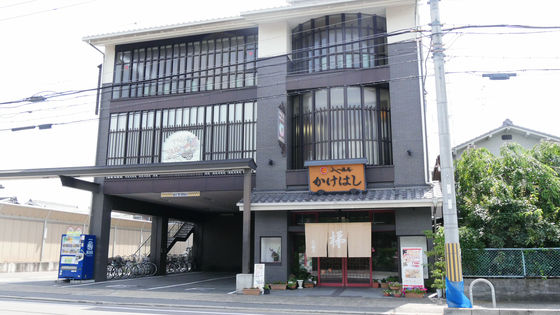
Enter the shop from the entrance, tell the reservation name at the reception and pay the experience fee first.
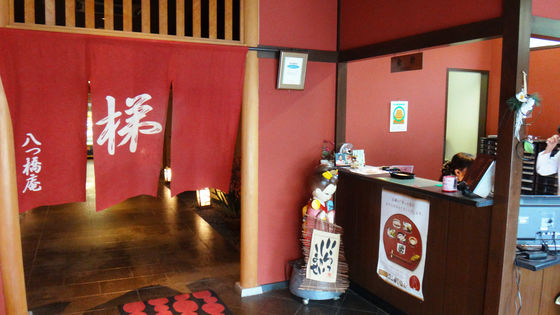
Go through the goodwill and go to the back of the corridor.
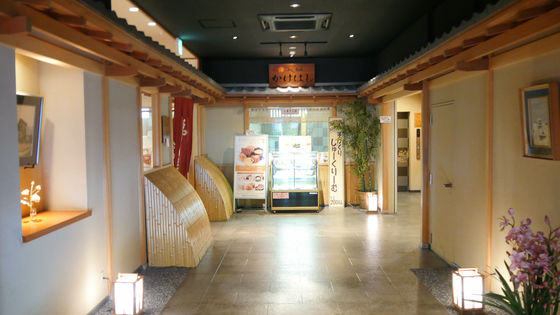
On the first floor, sales of sweets such as "Yatsudobashi puff cream" and "homemade raw seasoned manju" made in the store were done.
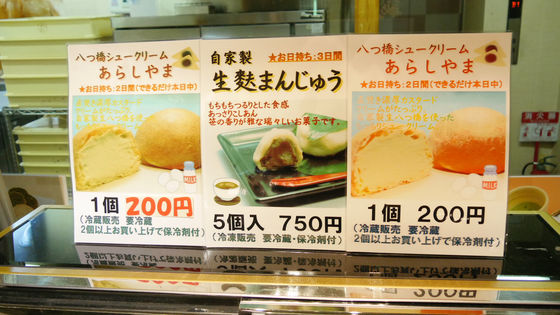
Because the experience studio is on the 2nd and 3rd floor, it rises to the 2nd floor with the stairs at the end.
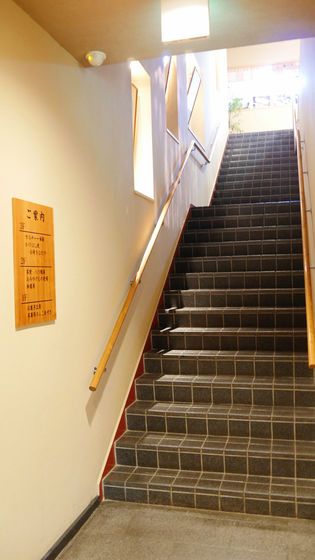
In addition to the room where handicrafts of Japanese sweets can be experienced, the Happo Bashan has a buffet venue for all you can eat, a souvenir department, a workshop where you can see sweets making, and a coffee shop.
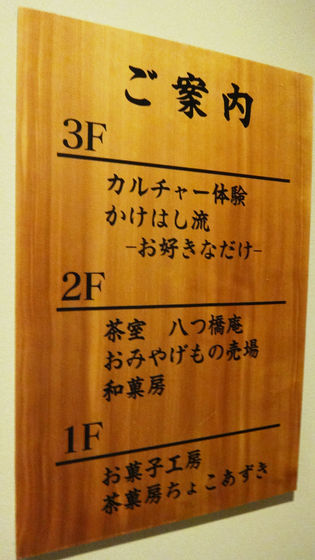
At the place where I went up the stairs there was a glassed "Yatsudobashi Kobo".
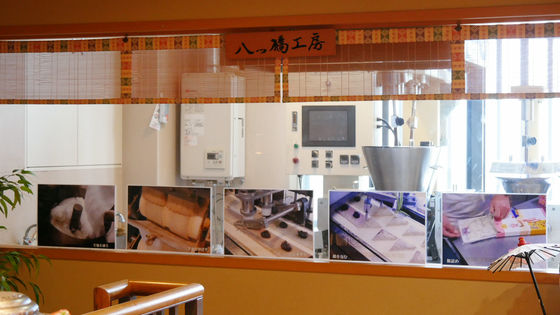
Although the machine was not running on the day of visit, you can also see the fact that you are actually making an eight bridge here.
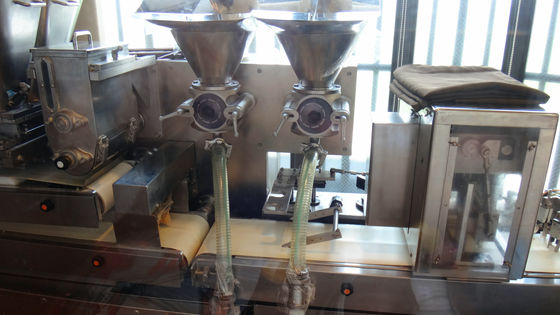
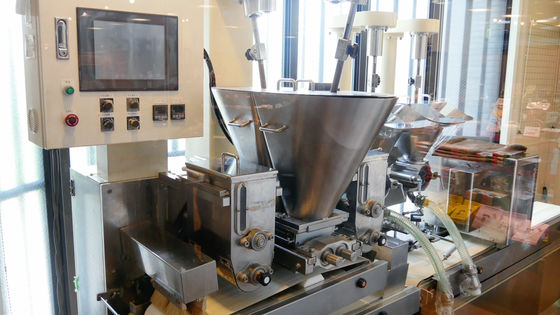
This time I experienced making the Eight Bridge at "Teahouse Eight Hashidanan" on the second floor. Leave the luggage on the shelf in the corridor, and then enter the room after washing the hands.
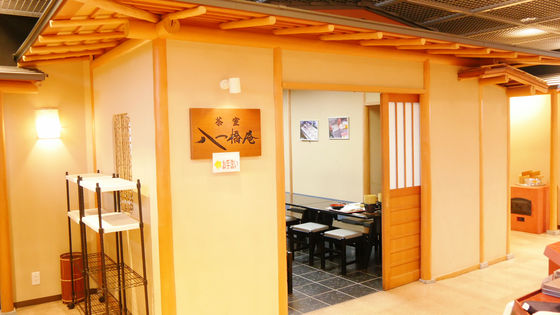
When I entered the room, the tools and materials used for making the Eight Bridge were set.
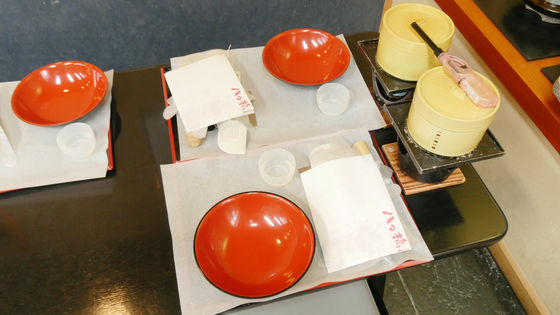
Before starting to make Yatsuhashi, I will install a paper apron so that my clothes will not get dirty. Apron is a Kyoto-like design with illustrations of sweet craftsmen and maiko being trained.
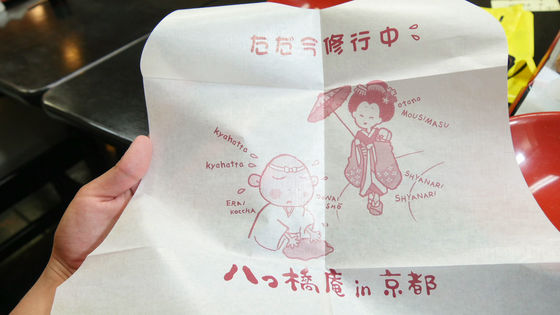
The material of the Eight Bridge consists mainly of white rice flour, Kaishin powder, sugar. First we will put white rice flour into the vessel.
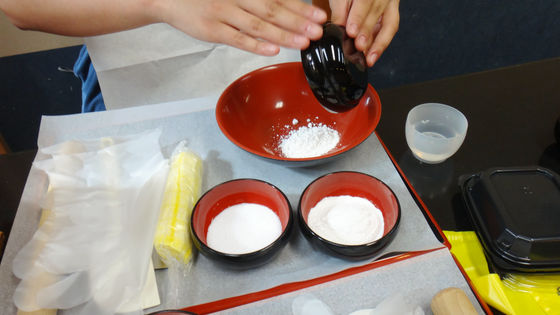
Next, pour water in half of the cup.
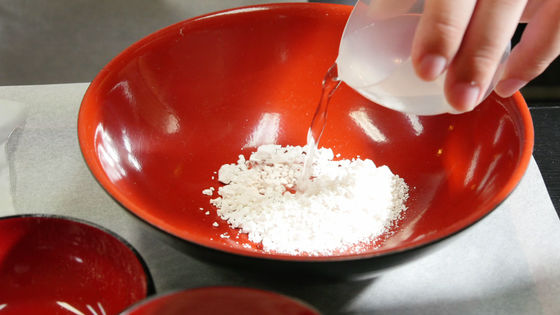
Mix well with spatula and let it mix powder and water.
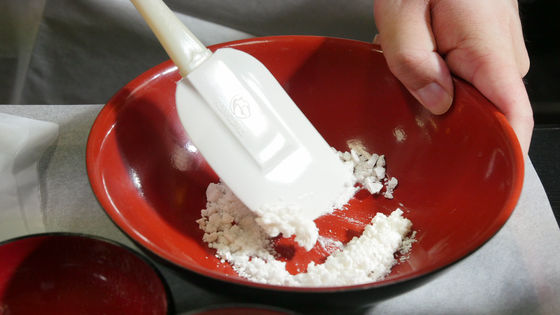
It will be ok if the powderyness disappears and it becomes a truck.
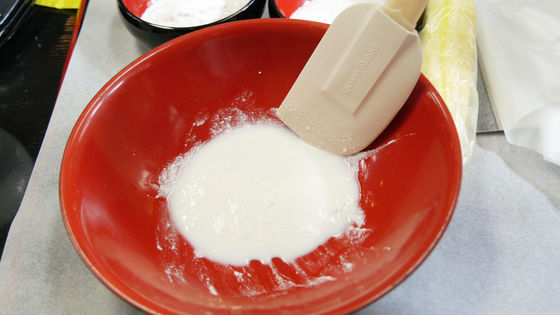
Next, I will put the Koshin powder in the vessel.
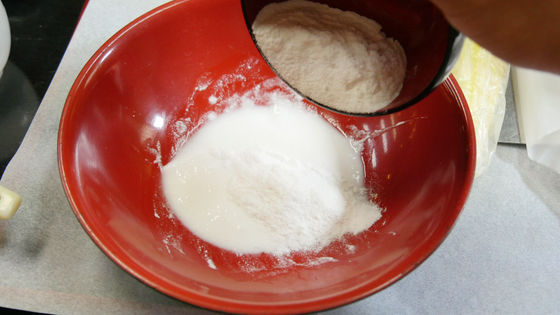
Pour all the water left in the cup ... ...
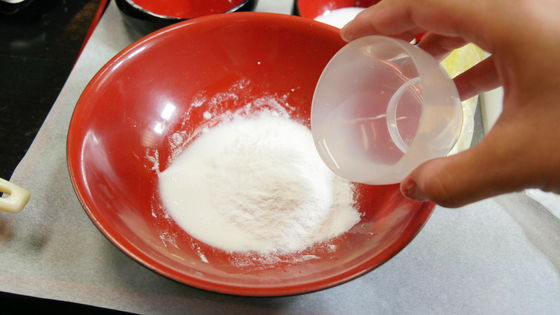
Again mix well until there is no dustiness.
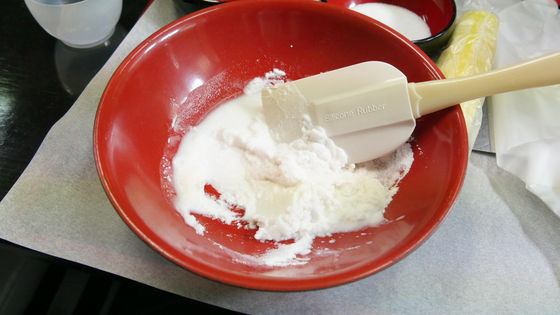
Finally sugar was introduced.
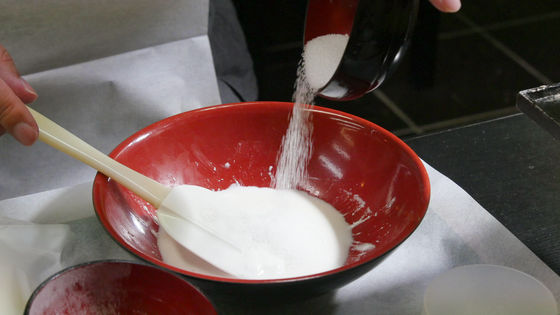
I added sugar and mixed it, it turned smoothly and smoothly. The liquid which is the source of the dough is now completed.
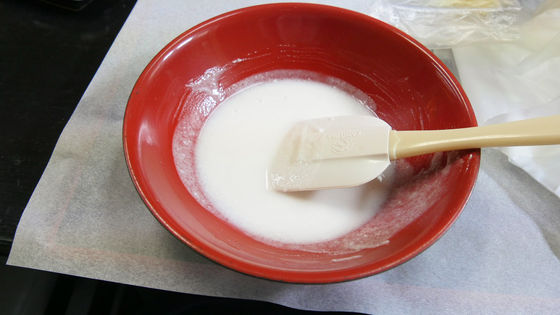
Next we will steam the source of dough by baking.

Because there is a paper cup in the inside, we pour the dough into it.
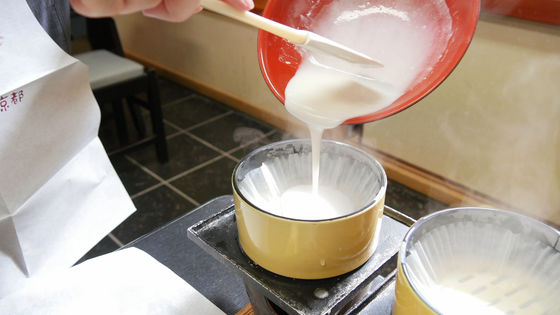
Close the lid and steam it for 7 minutes.
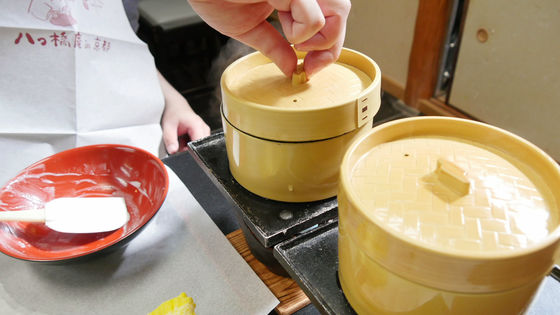
Steam came out of the lid gap as it grew from 2-3 minutes.
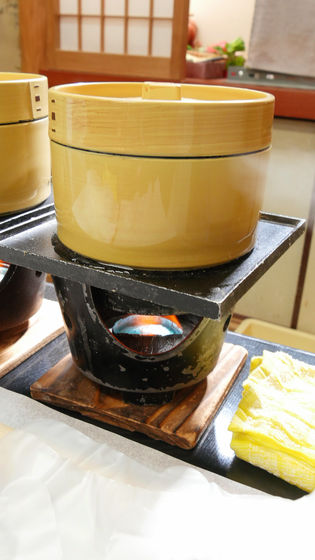
Wait while watching a video to explain how the live eight bridge is made until the dough is steamed up.
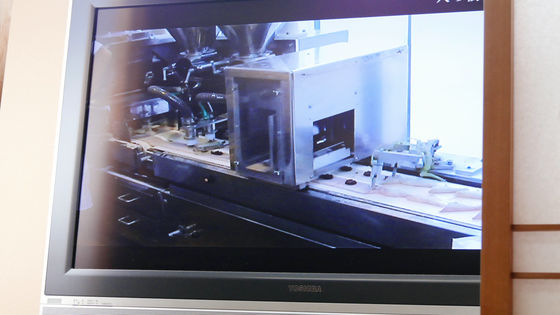
Because the live eight bridges are so soft and easy to collapse, it seems that the box packing is done by hand.
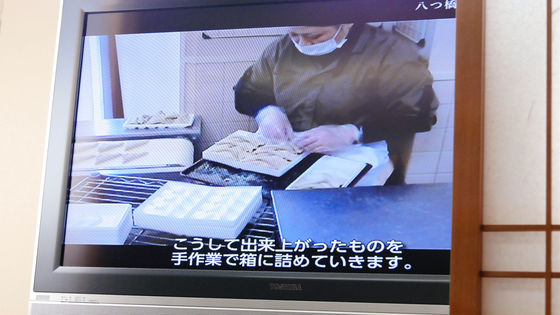
After 7 minutes, the dough of the Eight bridge steamed up. Steam stood steadily from the stove, and a sweet scent like steamed rice cake rings.
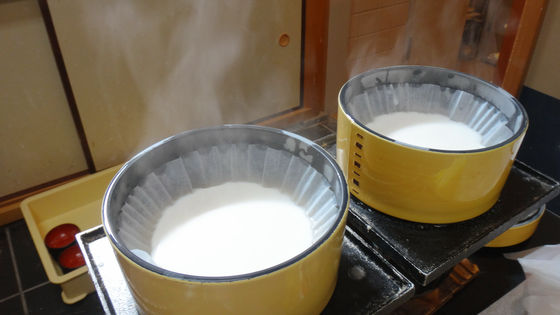
The following materials are used for finishing the raw Yata-bashi.
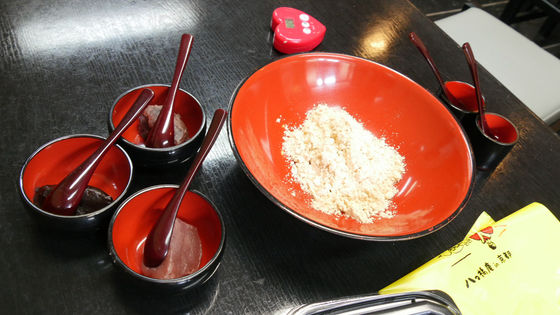
First spread the Kinako on the sheet, roll the Rolling Stick and lightly put the Knaked Flour on the surface.
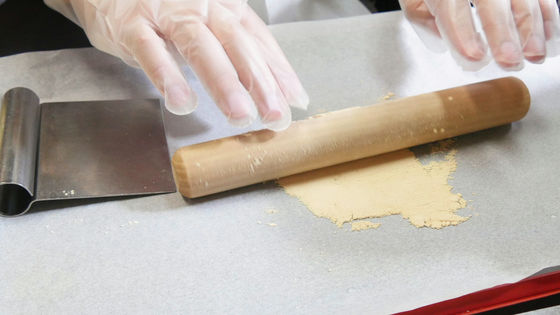
Pull out the cup from the inside ... ...
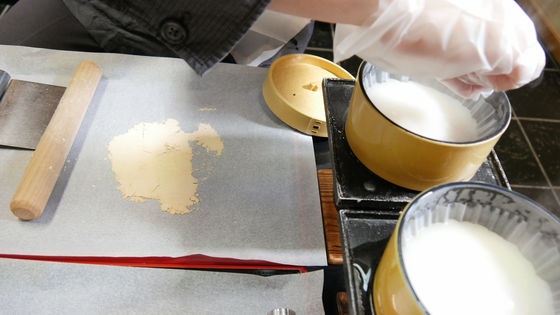
Take out the dough on top of the konako powder. Since the dough is in a steamed state, I work while paying attention not to burn out.
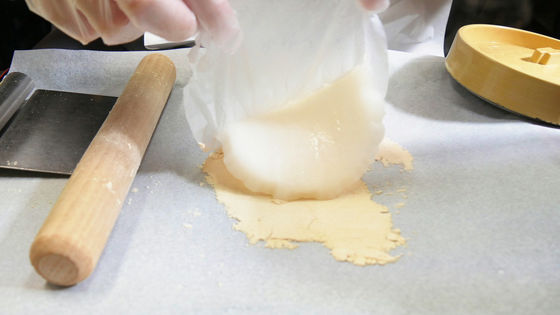
I will coat the front and back of the fabric with konakame.
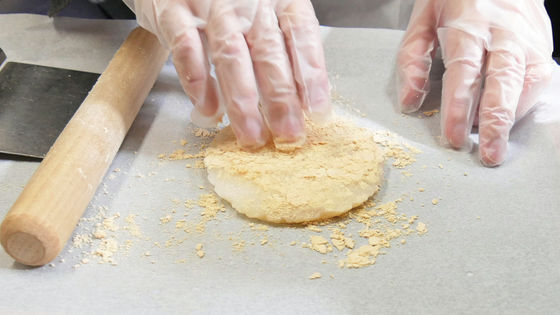
Because we make three kinds of eight bridges, cut the fabric into three equal parts using a skapper.
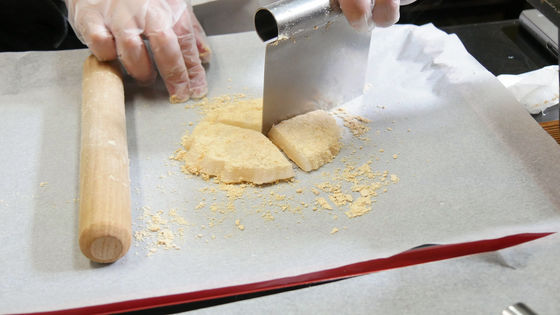
We will color each of the three pieces of fabric. First of all, take the spoon of Nikki's powder and put it on the fabric.
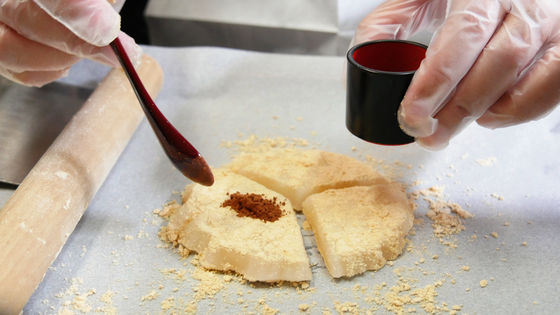
Like Nikki, I put cocoa on the second fabric. The third dough drops 3 drops of water that has dissolved reddish reddish water to make a pink fabric.

I knead the fabrics one by one, and color the whole fabric.
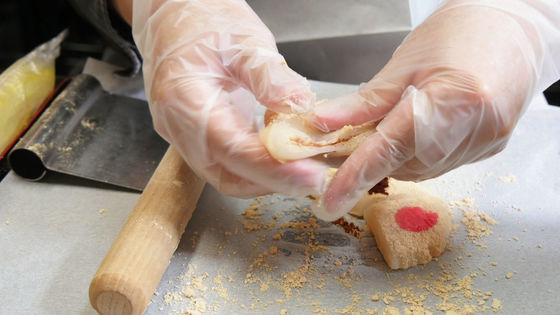
While we are kneading it is a marble pattern ... ...
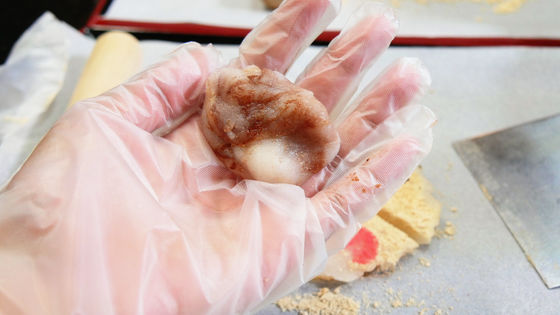
If you continue to kneading for a while, it will change to a beige-like color similar to what you sell at a shop.
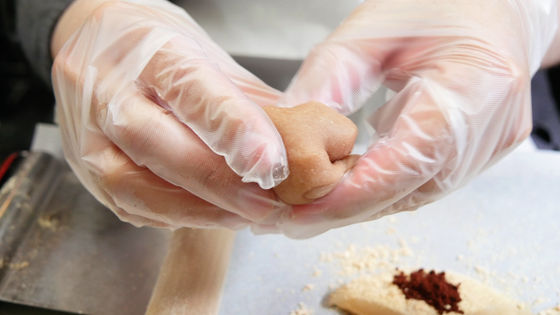
It is like this when kneading all three kinds of fabric and forming it in a ball shape. From the left is Nicki, cocoa, cloth made into cloth.
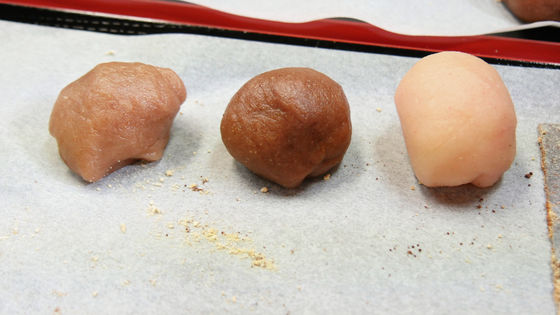
Place the dough again on the crushed powder and roll it over and sprinkle the surface of the dough with crushed powder.
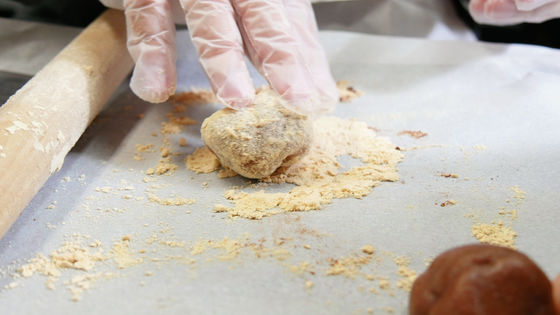
For easier processing afterwards, put all the three types of fabric on the dough.
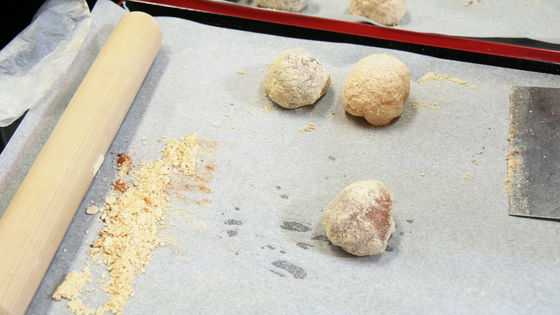
Next, we will form the fabric flat. First take out one fabric and lightly crush it with your hands.
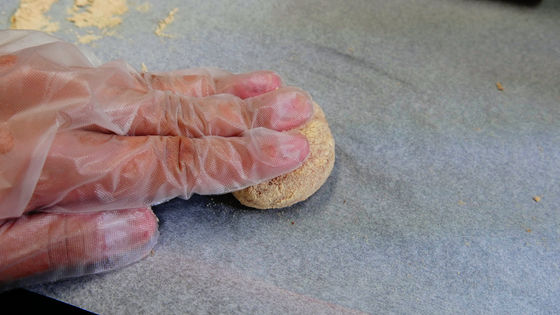
I will further extend it flat using a noodle stick.
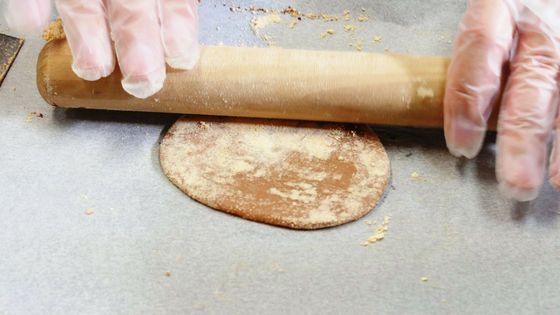
After stretching it in the vertical direction, we rotate the fabric 90 degrees and extend it sideways as well.
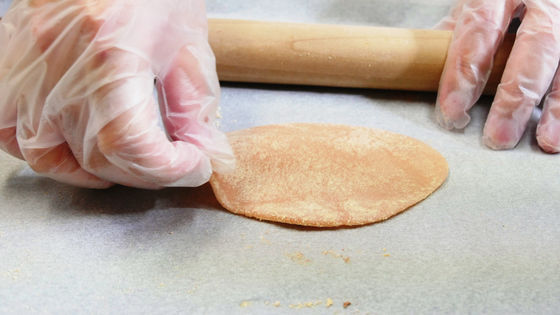
It is a standard to extend the fabric until it is as big as the skapper.
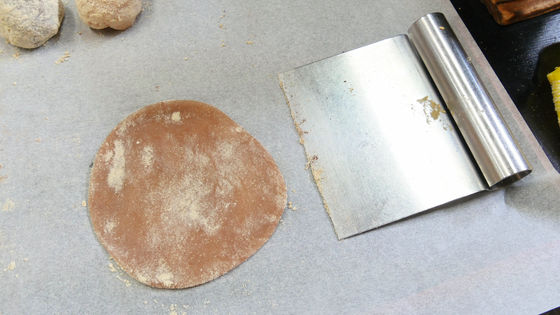
Cut the round and stretched fabric around with the skapper and shape it into a square.
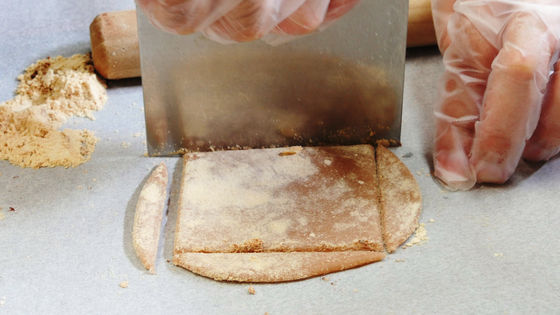
Cut it out with a square and look like this. In addition, baking the dough in this state will complete "Eight Bridge" with a solid texture.
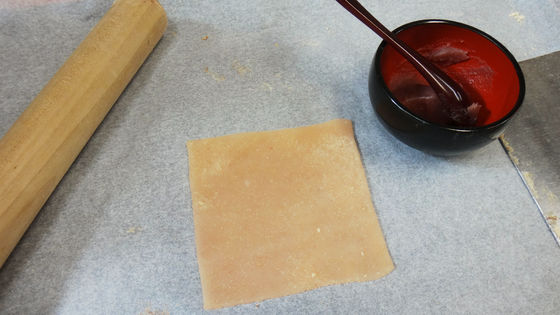
I cut off the part as it is and it is OK. When I try to eat it is slightly warm, steamed and slightly warmer than the live eight bridges on the market. The sweetness was modest and the flavor of Nikki was felt firmly.
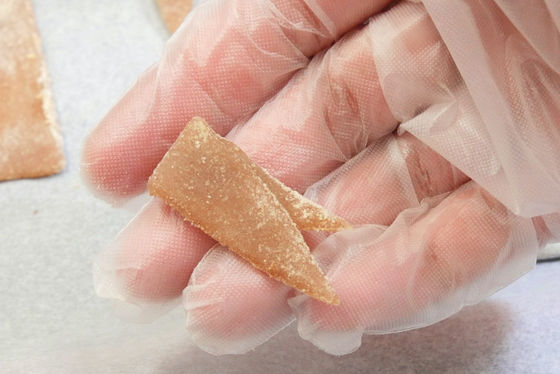
Place the anko on the somewhat corner of the fabric.
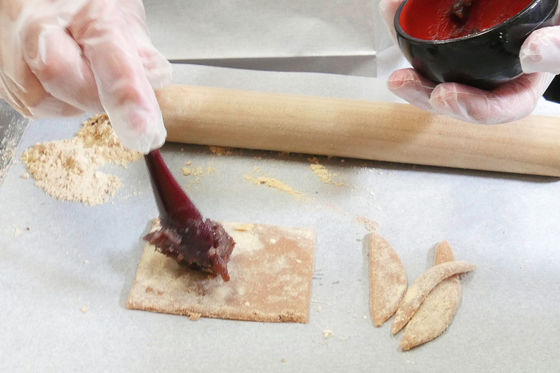
Complete it after folding the fabric into a pattern so that it becomes a triangle.
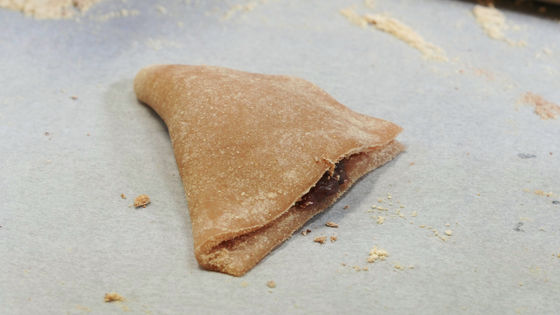
Stretch the remaining two kinds of fabric with a noodle stick ......
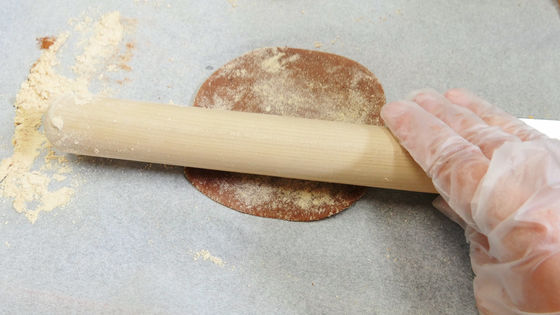
Cut it out square.
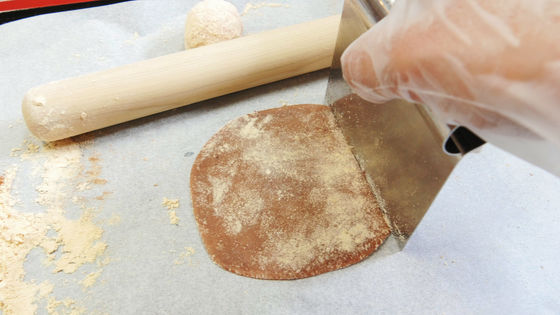
I will put on chocolate flavored bean paste on cocoa fabric.
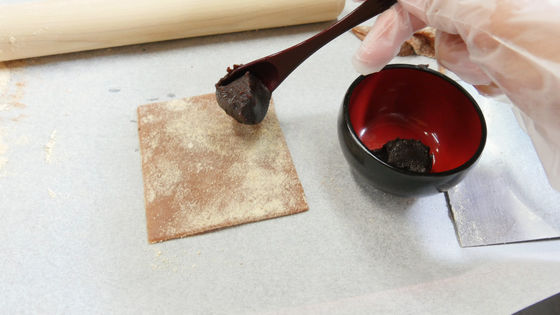
I pinched the four corners and tried to make it like a flower.
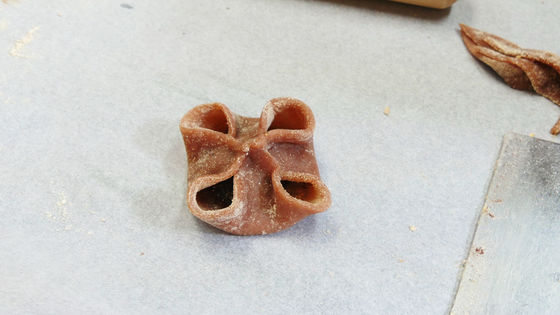
I put strawberry flavored bean paste in a cloth containing cloth red, wrapped in a triangle.

Three kinds of completed live eight bridges are arranged and it looks like this.
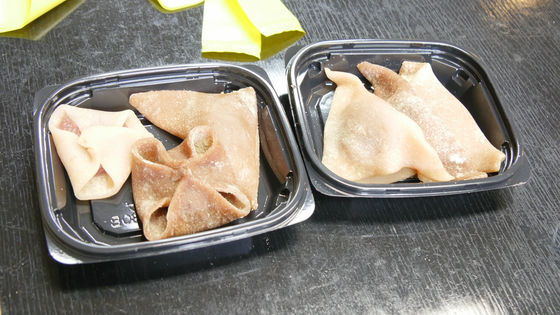
You can take the raw 8 bridge you made and put it in a pack. When taking it home, please keep it in the refrigerator and eat it in one or two days.
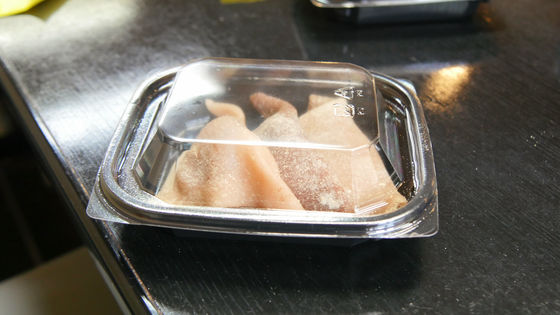
Bags for take-away are also available.
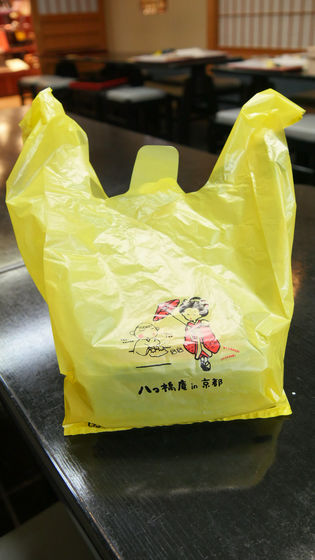
Eight bridges of various tastes were sold at the souvenir department so it may be nice to find the eighth bridge of your favorite taste besides the raw eight bridge made by handmade experiences and buy it and go home. .
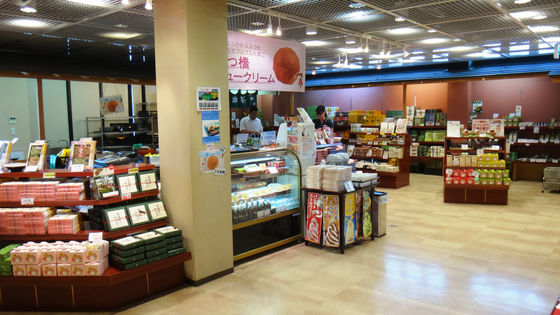
This bought Yaebashi bridge was taken like this, feeling a bit softer than the one on the market.
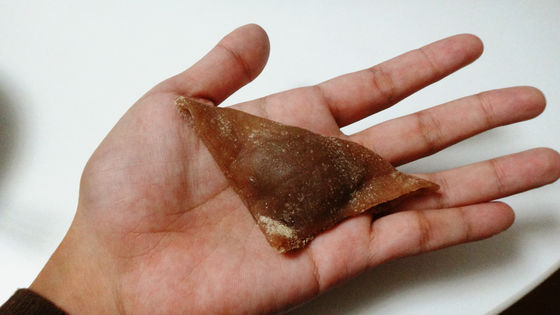
Nikki's live eight bridges are compatible with sweetness of tsunami and a tangy taste of Nikki. You can also enjoy the difference in texture of rice cake fabric and soft bean-raised azuki bean.
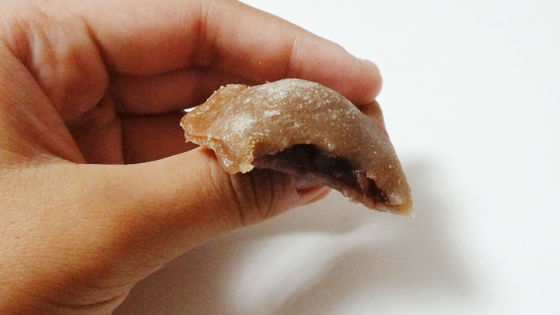
The live eight bridge of chocolate is an eight bridge where you can taste sweetness of chocolate and dense sweetness of dumplings.
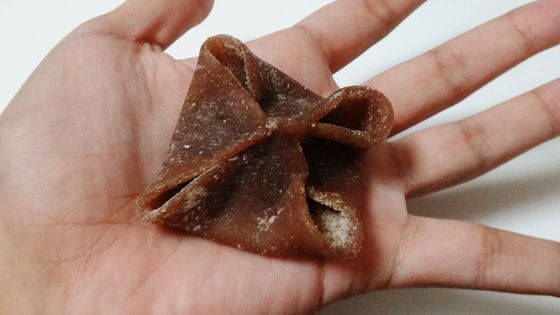
Strawberry's live eight bridge was a bit different kind of eight bridge, where you can feel the flavor of sweet and sour strawberries.
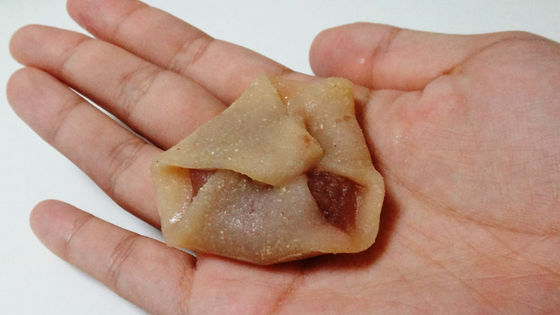
"Hakuhachi bridge handmade experience making from cloth" of Yakuhashian Kakehashi is held throughout the year, and the fee is 1080 yen per person. The minimum number of people is from 2 people, and the experience time is about 50 minutes. Also, besides making live eight bridges, a hands-on experience class that handmade strawberry Daifuku, Niririki, matcha parfait, Mitarashi dumplings, tofu, fresh buns and seasonal sweets is also conducted, and can be booked from the following page It has become.
Karucha experience [Kakeharashi]: Hachidobashian Kakehashi
http://yatuhasian.jp/exp/
Related Posts:



